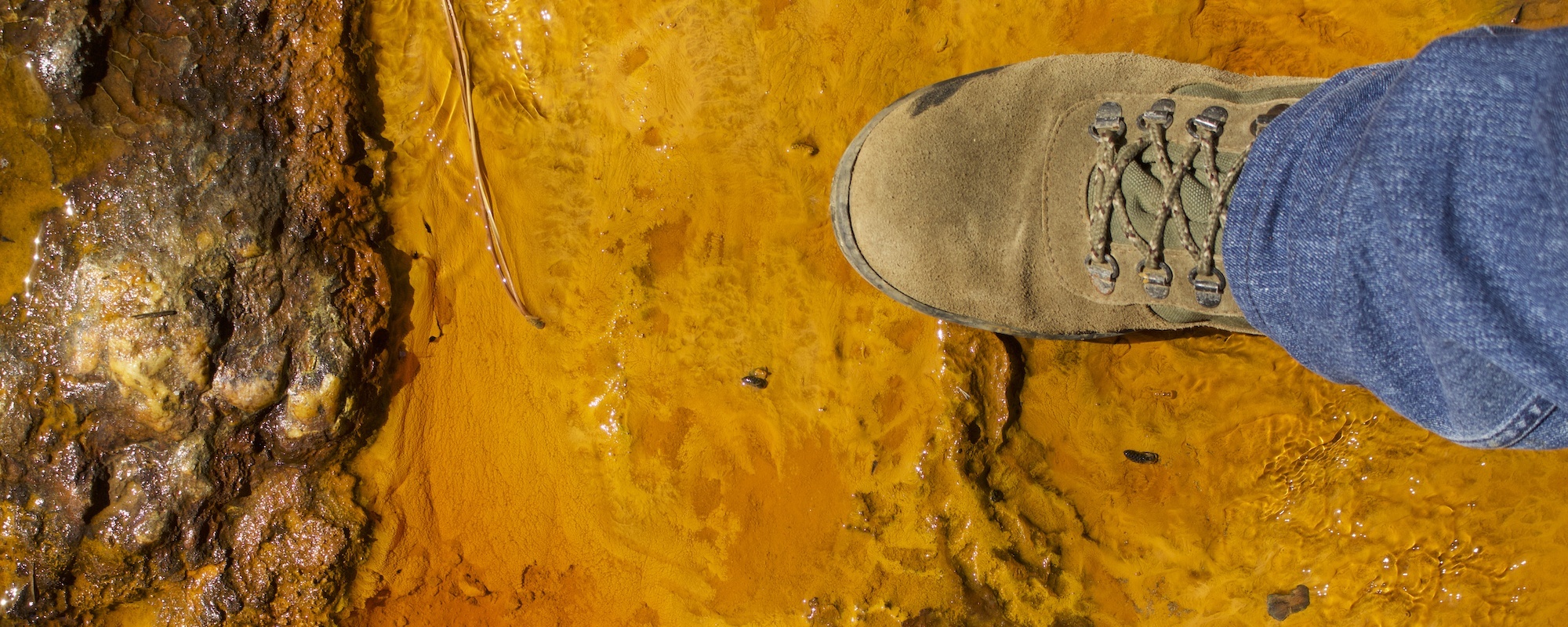TA1 Facility 2 – Rio Tinto
Average visit: 1 week
Rio Tinto is one of the best characterised extreme habitats on Earth due to decades spent in characterising the local geology, hydrology and biology, often in the context of multi-national and multi-disciplinary teams [Amils et al. 2014].
The unique nature of Rio Tinto is caused by rock-water-biology interactions that produces a river with a pH of ~ 2.3 over a length of ~ 100 km. The low water pH and hydrated mineral precipitation is dominated by jarosite and goethite. The environment is comparable to that found by the Mars Rovers and inferred from satellite observations (Mars Express) in the regions to be explored by ExoMars-2022.
The river supports a flourishing and varied ecosystem pertinent for studying possible habitats for life on other planetary bodies and the detection of characteristic bio- geochemical signals in the rock record indicative of present or past life. The river transects a region of pyrite mineralisation allowing chemolithotrophic bacteria to metabolise pyrite by oxidising sulphur and ferrous iron ultimately producing sulphuric acid, sulphates and ferric iron as the metabolic products.
The site provides an excellent example of how life adapted to extreme conditions and may provide clues to the type of bacterial life that may once have been present on Mars. The surrounding landscape comprises old terraces covered by iron minerals and is perfect for testing rovers and platforms for Mars exploration.
Additionally, the site includes the estuary region where the acidic river water (pH ~2) mixes with marine conditions (pH ~8.3) with certain sites recording rapid fluctuations in pH, oxidation state and nutrient supply. This site is an ideal location to study the survival-adaptive capabilities of different organisms when placed under extreme environmental stress. The Rio Tinto site has a history of use for instrument testing within international co-operations for space missions (e.g., ExoMars RAMAN-LIBS, REMS for Mars Science Laboratory, and Spirit and Opportunity rover science teams for the study of jarosite outcrops).
The field analogue is currently used by 6 international partners (e.g., Wood Hole Oceanographic Institute, NASA Ames Research Centre, University of Washington at St. Louis, Honey Bee Robotics).
Importantly, the Rio Tinto field analogue is not only of interest to the planetary community. Geologists, microbiologists and palaeontologists work within the field analogue. The nature of the preservation of organic matter in such acidic conditions is of great interest to palaeontologists and microbiologists who are examining the nature and diversity of life in extreme acidic conditions.
Contact:
Dr. Felipe Gómez, CAB-CSIC, Carretera Ajalvir Km 4 Torrejón de Ardoz Madrid 28850 Spain. gomezgf@cab.inta-csic.es
Report summaries of TA visits to facility
Back to the TA1 Planetary Field Analogues Page







